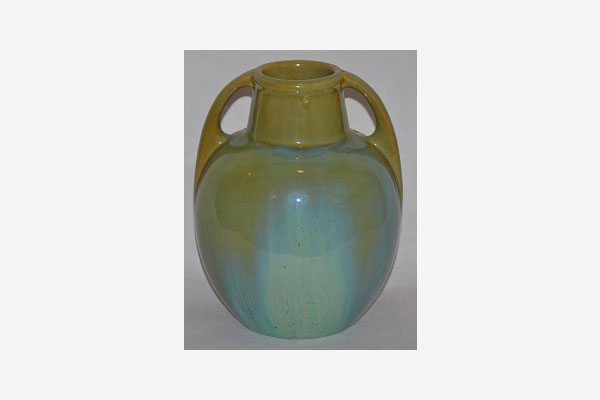Fulper Pottery is arguably one of the most varied lines of American art pottery. It’s also consistently increased in value  over the years and because there are so many influences, it remains now and likely always be highly sought after. Here are ten things you might not have known about this exceptional line.
over the years and because there are so many influences, it remains now and likely always be highly sought after. Here are ten things you might not have known about this exceptional line.
- Fulper Pottery underwent several name changes during its existence and wasn’t always a true art pottery manufacturer. Samuel Hill was the first owner and in 1815, his Flemington New Jersey company sold drain tile. By the mid 1850s, one of his employees, Abraham Fulper, became a partner and after Hill’s death, Fulper bought the company.
- Initially, the new company began as a stoneware producer and offered more functional pieces such as pitchers and bowls.
- Fulper was produced for just twenty five years and in that time, there were more than 1,000 shapes and sizes.
- The most recognized line is Vasekraft. It was introduced in late 1909 by the original founder’s grandson, William Hill Fulper II. He was also one of the earliest artists who took risks with different color variations.
- Another reason it’s so varied is because of cultural influences. The earliest pieces had a German flair, most likely because of German potter John Martin Stagl. Oriental is considered the dominating influence in those middle years and eventually, there was a definitive art deco style that was more of an influence.
- The glazing during those earliest years, again, influenced by Stangl, are often described as “curious” and present as a “vertical rectangle” stamp. This marking can be found on the pottery pieces up until around 1920.
- If you come across a lighter clay body, odds are, it’s one of the later pieces.
- Fulper Pottery is the first company to offer a single color glazed dinnerware in the United States. The year was 1920.
- The Flemington plant was destroyed in 1929 by a fire. The company relocated to Trenton, New Jersey.
- By 1955, the name had changed again to Stangl Pottery and once again began offering the more functional pieces.


